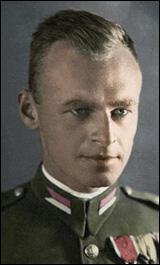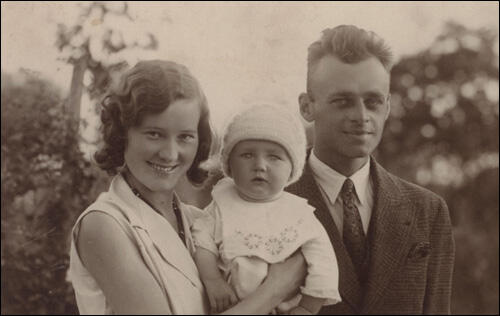Witold Pilecki

Witold Pilecki was born in Poland in 1901. When the German Army invaded the country in September, 1939, Pilecki joined the Tajna Armia Polska, the Secret Polish Army.
When Pilecki discovered the existence of Auschwitz, he suggested a plan to his senior officers. Pilecki argued he should get himself arrested and sent to the concentration camp. He would then send out reports of what was happening in the camp. Pilecki would also explore the possibility of organizing a mass break-out.
Pilecki's colonel eventually agreed and after securing a false identity as Tomasz Serafinski, he arranged to be arrested in September, 1940. As expected he was sent to Auschwitz where he became prisoner 4,859. His work consisted of building more huts to hold the increased numbers of prisoners.
Pilecki soon discovered the brutality of the Schutz Staffeinel (SS) guards. When one man managed to escape on 28th October 1940, all the prisoners were forced to stand at attention on the parade-ground from noon till nine in the evening. Anyone who moved was shot and over 200 prisoners died of exposure. Pilecki was able to send reports back to the Tajna Armia Polska explaining how the Germans were treating their prisoners. This information was then sent to the foreign office in London.

In 1942 Pilecki discovered that new windowless concrete huts were being built with nozzles in their ceilings. Soon afterwards he heard that that prisoners were being herded into these huts and that the nozzles were being used to feed cyanide gas into the building. Afterwards the bodies were taken to the building next door where they were cremated.
Pilecki got this information to the Tajna Armia Polska who passed it onto the British foreign office. This information was then passed on to the governments of other Allied countries. However, most people who saw the reports refused to believe them and dismissed the stories as attempts by the Poles to manipulate the military strategy of the Allies.
In the autumn of 1942, Jozef Cyrankiewicz, a member of the Polish Communist Party, was sent to Auschwitz. Pilecki and Cyrankiewicz worked closely together in organizing a mass breakout. By the end of 1942 they had a group of 500 ready to try and overthrow their guards.
Four of the inmates escaped on their own on 29th December, 1942. One of these men, a dentist called Kuczbara, was caught and interrogated by the Gestapo. Kuczbara was one of the leaders of Pilecki's group and so when he heard the news he realized that it would be only a matter of time before the SS realized that he had been organizing these escape attempts.
Pilecki had already arranged his escape route and after feigning typhus, he escaped from the hospital on 24th April, 1943. After hiding in the local forest, Pilecki reached his unit of the Tajna Armia Polska on 2nd May. He returned to normal duties and fought during the Warsaw Uprising in the summer of 1944. Although captured by the German Army he was eventually released by Allied troops in April, 1945.
After the Second World War Pilecki went to live in Poland.The Polish Secret Police had him executed in 1948. It is believed that this was a result of his anti-communist activities.
Primary Sources
(1) Witold Pilecki sent a report to Tajna Armia Polska about what he witnessed at Auschwitz.
On the way one of us was ordered to run to a post a little off the road and immediately after him went a round from a machine-gun. He was killed. Ten of his casual comrades were pulled out of the ranks and shot on the march with pistols on the ground of "collective responsibility" for the "escape", arranged by the SS-men themselves. The eleven were dragged along by straps tied to one leg. The dogs were teased with the bloody corpses and set onto them. All this to the accompaniment of laughter and jokes.
